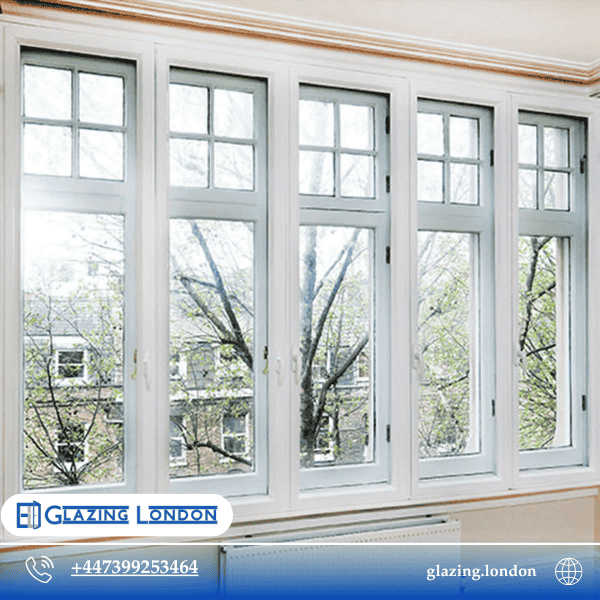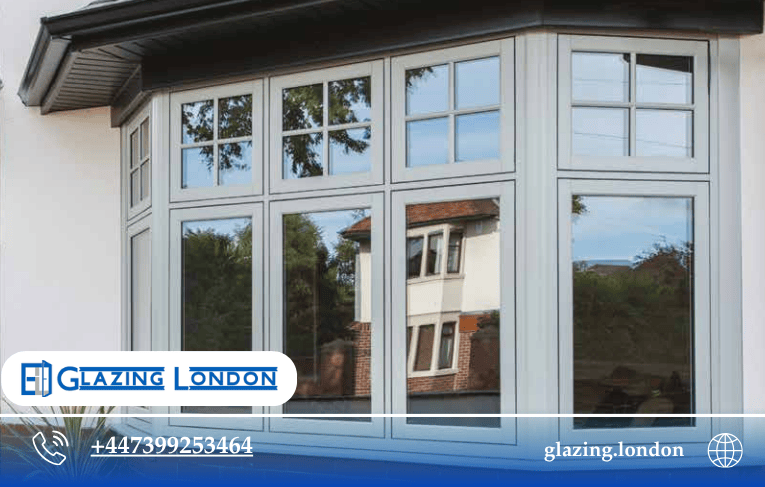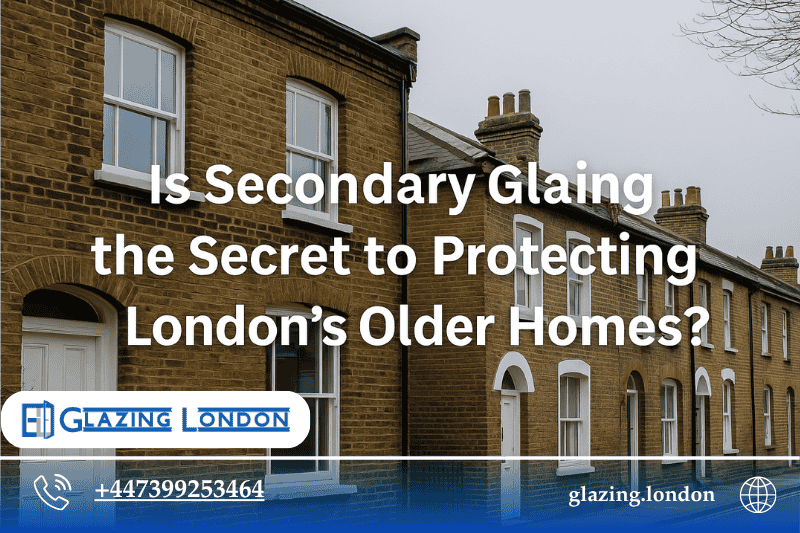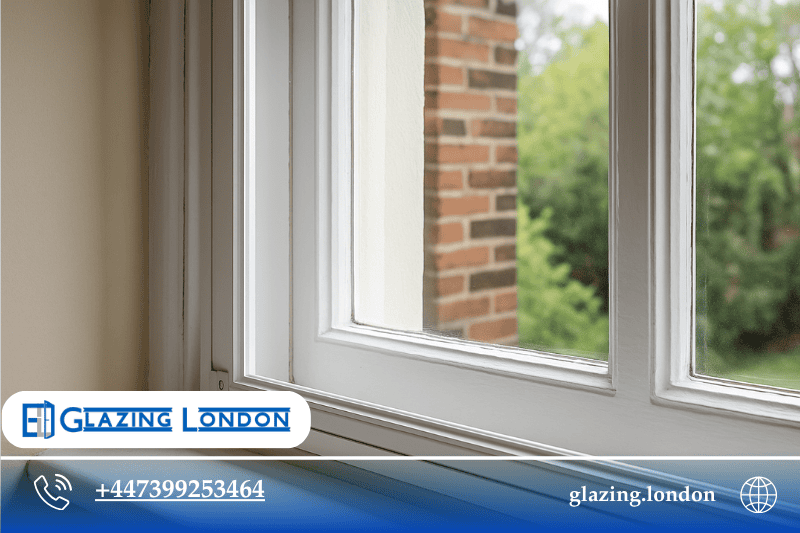London’s skyline is a unique blend of modern skyscrapers and centuries-old architecture . From Victorian terraces to Georgian townhouses and Edwardian villas , the city’s older homes carry a charm that’s hard to replicate . But while these properties have stood the test of time , they often face modern-day challenges — from poor insulation and noise pollution to condensation and costly energy bills .
For homeowners trying to preserve the character of these buildings without compromising on comfort , secondary glazing is emerging as one of the smartest solutions . But is it really the secret to protecting London’s older homes? Let’s explore why secondary glazing is gaining so much attention and how it could transform the future of period properties .
What Is Secondary Glazing?
Secondary glazing is an additional pane of glass installed on the inside of an existing window . Unlike double glazing , which requires replacing the entire window unit , secondary glazing works with what’s already there . This makes it ideal for older properties where replacing original windows isn’t possible — either due to listed building restrictions or because the homeowner wants to preserve the historical charm .
The concept is simple: by creating a sealed layer of air between the existing window and the new pane , secondary glazing significantly improves insulation , reduces noise , and enhances security — all without altering the building’s original appearance .
Double Glazing Door Installation in London
Why Older Homes in London Need Better Protection
Before diving into the benefits of secondary glazing , it’s worth understanding the key issues older homes face:
- Poor Insulation: Many period homes were built before modern insulation standards existed . As a result , they lose a large amount of heat through single-glazed windows .
- Condensation: Cold single-pane glass can lead to condensation , causing dampness and potential mould growth .
- Noise Pollution: London’s busy streets can make life uncomfortable inside homes with thin , single-glazed windows .
- Energy Costs: Heat loss means higher energy usage and rising bills .
- Security Risks: Older windows often have weaker locks and thinner glass , making them easier to break .
Secondary glazing tackles all these issues without compromising on the property’s character or violating planning restrictions .
Benefit 1: Preserving Historic Character
Perhaps the biggest reason London homeowners choose secondary glazing is that it allows them to retain original windows — often a defining feature of period properties .
Listed buildings and homes in conservation areas typically have strict regulations about replacing windows . Secondary glazing provides a workaround . Since it’s installed internally and doesn’t alter the exterior appearance , it complies with planning laws while delivering modern performance benefits .
For many homeowners , the character of sash windows or original timber frames is part of what makes their property special . Secondary glazing preserves that heritage charm — while solving 21st-century comfort and efficiency challenges .
Benefit 2: Transforming Energy Efficiency
Energy efficiency is a major concern in London’s older homes . Studies show that up to 20% of a property’s heat can escape through poorly insulated windows . Single-glazed panes are particularly inefficient , leaking warmth in winter and allowing heat to enter in summer .
Secondary glazing adds an insulating layer that traps air — reducing heat transfer and dramatically improving thermal performance . This can lead to:
- Lower heating bills
- A more consistent indoor temperature
- A reduced carbon footprint
While replacing windows entirely is another option , it’s expensive and often restricted in listed buildings . With Secondary Glazing London , homeowners can achieve comparable insulation levels at a fraction of the cost — and without altering the original architecture .
Benefit 3: Quieter , More Peaceful Living
London is one of the world’s busiest cities — and noise pollution is a growing problem . Homes located near main roads , railways , or busy commercial areas can suffer from constant background noise that disrupts sleep and daily life .
Secondary glazing is remarkably effective at sound insulation . The additional layer of glass and the air gap between panes help absorb and block sound waves . Many homeowners report a reduction in noise of up to 80% , making even the busiest streets feel peaceful .
For those living near transport hubs or high-traffic areas , secondary glazing can be life-changing — bringing serenity without sacrificing style .

Double Glazing Door Repair London
Benefit 4: Say Goodbye to Condensation
Condensation is more than just an annoyance . In older homes , it can cause damp walls , damage paintwork , and even lead to mould growth — all of which affect the building’s structure and your health .
Secondary glazing helps by keeping the internal glass surface warmer , reducing the temperature difference that causes moisture to condense . This small change has a big impact on the longevity of your property and can save thousands in maintenance costs over time .
Benefit 5: Enhanced Security Without Altering Aesthetics
Security is another concern for owners of period homes . Original single-glazed windows are often vulnerable to break-ins . Adding secondary glazing creates an extra barrier , making forced entry much more difficult .
It’s also a discreet solution — the internal pane isn’t visible from the outside , so it doesn’t spoil the home’s character . Combined with upgraded locks and reinforced glass , secondary glazing significantly improves security without modernising the home’s historic appearance .
Secondary Glazing vs Double Glazing: Which Is Better?
A common question among homeowners is whether to choose double glazing or secondary glazing . While both improve insulation and reduce noise , the best choice depends on your property type .
- Double glazing involves replacing the entire window with a sealed unit containing two panes of glass . It offers excellent energy efficiency but can be expensive and may not be permitted in listed buildings .
- Secondary glazing is installed inside existing windows , preserving the original frame while delivering most of the same benefits . It’s more cost-effective and often the only viable option for heritage properties .
If your home is modern and not restricted by planning laws , double glazing might be the right choice . But if preserving character matters — or your property is listed — secondary glazing is almost always the smarter solution .
For more information on window replacement options , check out our guide on Replacement Windows London .

Window installation in London
Secondary Glazing in Real London Homes – Case Studies
🏡 Georgian Townhouse in Islington
The owners of a 19th-century townhouse in Islington wanted to reduce heating costs but were restricted from replacing their sash windows . By installing secondary glazing , they cut their energy bills by 28% in the first year and reported a noticeable drop in noise from the nearby main road .
🏙️ Victorian Flat in Hackney
A ground-floor flat near a busy street struggled with noise and condensation . Secondary glazing reduced interior noise by over 70% , while condensation issues disappeared entirely .
🏢 Edwardian Property in Lambeth
A homeowner concerned about break-ins opted for toughened secondary glazing . The result? Improved security without altering the property’s façade — and added peace of mind .
Window Repair in London
Secondary Glazing for Landlords and Property Investors
For landlords , secondary glazing is more than just an upgrade — it’s a selling point . Tenants value quiet , energy-efficient , and secure homes . Installing secondary glazing can justify higher rents and reduce turnover .
Property investors renovating period homes also benefit . Because secondary glazing improves EPC ratings , it can make properties more attractive to buyers and boost resale value — without triggering planning complications .
Business Applications: Not Just for Homes
While most people associate secondary glazing with residential use , it’s also valuable in commercial settings . Shops , offices , and restaurants housed in older buildings can all benefit from improved insulation , security , and noise reduction .
For businesses , secondary glazing can reduce operating costs , improve customer comfort , and create a more professional environment — all while preserving the building’s heritage look .
For emergency repair needs in commercial or residential settings , our Emergency Glazing London services are available 24/7 .
Double Glazing Window Installation in London
Step-by-Step: How Secondary Glazing Is Installed
The process is straightforward and non-invasive:
- Initial Consultation – A glazing specialist inspects your property and recommends the best solution .
- Custom Measurement – Each pane is custom-made to fit perfectly inside your existing windows .
- Professional Installation – The secondary glazing is fitted internally with minimal disruption .
- Final Inspection – A quality check ensures airtight sealing and perfect finish .
Most installations take just a few hours , with no need for planning permission and minimal disruption to daily life .
Cost of Secondary Glazing in London
Secondary glazing is typically 40–60% cheaper than full window replacement . Costs depend on window size , style , and materials , but here’s a general guide:
| Window Type | Typical Cost (Per Window) |
| Standard sash window | £300 – £500 |
| Large bay window | £500 – £900 |
| Custom shapes | £600+ |
While initial costs vary , most homeowners recover their investment within 3–5 years through lower energy bills and reduced maintenance costs .
Double Glazing Window Repair in London
Why Secondary Glazing Is a Smart Long-Term Investment
Secondary glazing is more than a quick fix — it’s a long-term investment in comfort , efficiency , and property value . Here’s why:
- Preserves historic features without breaching planning laws
- Cuts energy bills by improving insulation
- Reduces noise and improves quality of life
- Improves security and peace of mind
- Boosts property value and rental potential
For many London homeowners , secondary glazing isn’t just an upgrade — it’s the key to preserving the past while preparing for the future .
Final Thoughts: The Future of London’s Heritage Homes
London’s historic homes are part of the city’s identity . But preserving them doesn’t mean sacrificing comfort or efficiency . Secondary glazing offers the perfect balance — protecting original features while providing the performance of modern windows .
Whether you live in a Georgian terrace , a Victorian townhouse , or a converted warehouse , secondary glazing could be the secret weapon that keeps your property warm , quiet , and secure for decades to come .






